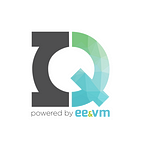Exploring Product-Led Growth
HackATL reflects, on a smaller scale, the debilitating process of having to create a business-driven solution or product that is scalable in the marketplace. As individuals take upon this challenge to build a business within 48 hours, this event brings the significance of product-led growth to light in order to sustain a company’s trajectory.
What are Product-Led Growth Companies?
Companies with high product-led growth, such as Slack, SurveyMonkey, Calendly, entail exceptional product experiences that enable consumers to share them with their respective networks. If customers acquire a unique value for a product, then they can also benefit from the use of these products by attracting new users towards them. These companies have spearheaded growth in products and services which have intertwined the following fields: project management, marketing and sales, and customer success. Despite the convergence of these disciplines, these new approaches in product-growth strategy introduce potential implications that may impede a company’s optimality.
If anything, creating silo teams (groups composed of individuals with similar expertise and goals) inhibits a company from optimizing its functions and operations to customers. Project teams should be cross-functional in order to leverage each capacity and maintain consistency to scale and market products/services. In order to quantify success and growth, most companies do utilize additional platforms and tools which incorporate data that track these metrics. These tools such as Jira and Google Docs can measure productivity to better understand and improve a business unit’s capacity — however, many companies still lack the ability to fully compile and analyze these data across various teams.
Now, more product-led growth companies are leaning towards strategizing how to disperse shared-product discovery activities among various business units such as product management, marketing, and customer success. But, how do they get there? Companies need to start approaching their operations with a cross-functional responsibility in order to optimize their services to customers.
More importantly, the importance of driving product growth may not necessarily be the only means to evaluate a business’s success. Because the business landscape is constantly changing, there is a high demand for not only a quality product but also an exceptional customer experience. It would not be possible for companies to assess how to produce, market, and sell a product without acquiring collaborative input from all of these business units. For this reason, the premise of “product road mapping” is rapidly changing as successful product teams are moving towards outcome-driven approaches to drive customer value. By defining metrics such as average revenue per user, customer lifetime value, or attributable daily active users, cross-functional teams are able to better understand customers’ needs. Furthermore, this new shift enables large companies to build better solutions and outcompete other product-driven companies.
Written by: Manavi Anantula| IQ Associate
